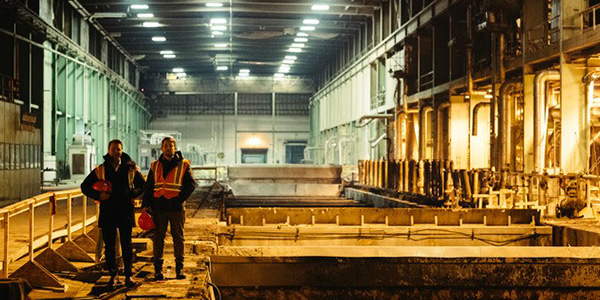A recent Massachusetts Clean Energy Center (MassCEC) competition to improve the energy efficiency of the state’s iconic triple-decker homes has sparked a new project to help make net-zero retrofits easier.
Gunnison, the recipient of the people’s choice prize in the Triple Decker Energy Efficiency Challenge, is developing a website that will identify options for renovating homes or buildings, along with upfront costs, long-term savings and energy performance.
“The problem with these renovations is that humans aren’t good at looking at hundreds of thousands of pieces of data and finding the best way to do this right,” founder Grant Gunnison said. “And so, the light bulb went off, and we said what we really need to do is make a catalog of all the different strategies and products so that you can search through a space to find the best and most cost-effective way to renovate a house.”
The contest asked participants to submit retrofit plans that would eliminate the use of on-site fossil fuels and reduce energy consumption. Designers and developers could plan a renovation for a typical triple-decker structure or add a unit as part of the design to offset costs for homeowners, who could rent the unit out.
MassCEC received 14 entries and awarded four winning prizes of $25,000, three runner-up prizes for $15,000, a people’s choice award of $15,000 and two honorable mentions.
“This challenge is a fun learning opportunity,” Gunnison said, and it gave him a basic knowledge of heat pumps and wall assemblies in unique buildings for the automated home renovation website.
As a researcher at MIT’s Space Telecommunications, Astronomy and Radiation Laboratory, Gunnison took a data-driven approach to the design that achieved net-zero emissions, but there is an “extremely high barrier to this kind of information,” he said.
To retrofit a house, most people have to hire an architect or a modeler from the engineering industry to understand what needs to be done and how, Gunnison said, and “they’re not cheap.”
The goal of Gunnison’s automated system for home renovations is to reduce the variance in the number of ways someone can retrofit a home to the most affordable options.
“What we were able to do is identify the most affordable way to actually hit net zero, and we want to democratize that,” he said.
There are 113 million buildings in the U.S., 70 million of which burn natural gas or other fossil fuels for heating and cooking. To keep the Earth’s warming below 1.5 degrees Celsius, building emissions need to be reduced by 45 to 50% by 2030 on the way to 100% by 2050, according to a report from the Intergovernmental Panel on Climate Change. That translates to about five million buildings per year in the U.S.
“We just don’t have enough engineers, architects and energy modelers to figure out how to retrofit every building,” Gunnison said. “That necessitates using computers to figure out how to get this done.”
His company is organizing a pilot with building owners and portfolio owners of affordable housing in Boston to gather more information for the automated system and scale it out to other building types — essentially recreating the MassCEC challenge with each building to reach net-zero emissions.
“We have to start to get pretty clever about how to figure that stuff out without going to the building because as soon as you step foot in the building, you’re spending too much time,” Gunnison said.
Improving Insulation
Triple-deckers, or three-story multifamily houses, were designed as housing for the immigrants who flooded into Massachusetts in the early 1900s. Revered for their classic look with numerous windows and balconies on each level, triple-deckers also have oil heating systems and little insulation.
The contest submission by OPAL Architecture and TIMBER HP, which won honorable mention for lowest embodied carbon, achieved a net-zero energy performance with a negative carbon footprint by focusing on insulation.
Buildings that meet the Passive House standard require three times the amount of insulation, but materials like foam are nonrecyclable and absorb moisture, creating mold and other toxic problems for homeowners.

Matt O’Malia (left) and Joshua Henry, co-founders of Timber HP, inside the old paper mill they are renovating in Madison, Maine, to manufacture wood fiber insulation for energy efficient homes. | Matt O’Malia
Insulation made from leftover wood residuals is a nontoxic material that does not hold moisture and would otherwise go to waste in landfills, Matt O’Malia, co-founder and partner of TIMBER HP and OPAL, said.
And because wood fiber sequesters carbon, “we are coming to the job site carbon-negative,” O’Malia said.
It also offers cost savings.
For structures like academic buildings, retrofitting or building walls and windows for better insulation with wood fiber costs the same as standard construction, he said. But it saves the institution 80% in operational costs.
TIMBER HP acquired an old paper mill in Madison, Maine, near massive forest reserves, to manufacture the product. By establishing its manufacturing site where paper mills went out of business, TIMBER HP is creating jobs where they were lost in a rural community, O’Malia said. The lost paper mills contributed $1.6 million annually to the state economy.
The new facility is set to start production in 2022. O’Malia predicted it will address 8% of the insulation market in New England at full capacity, meaning there is potential for additional plants across the country.
His team also developed a way to retrofit insulation from the outside of the home, so owners or renters do not need to leave while the renovation is happening.
“There are so many houses that have to be renovated. … You can’t ask all of these people to move out during this,” O’Malia said.
Later this year, MassCEC expects to help fund demonstration projects using the concepts from the triple-decker design competition.


